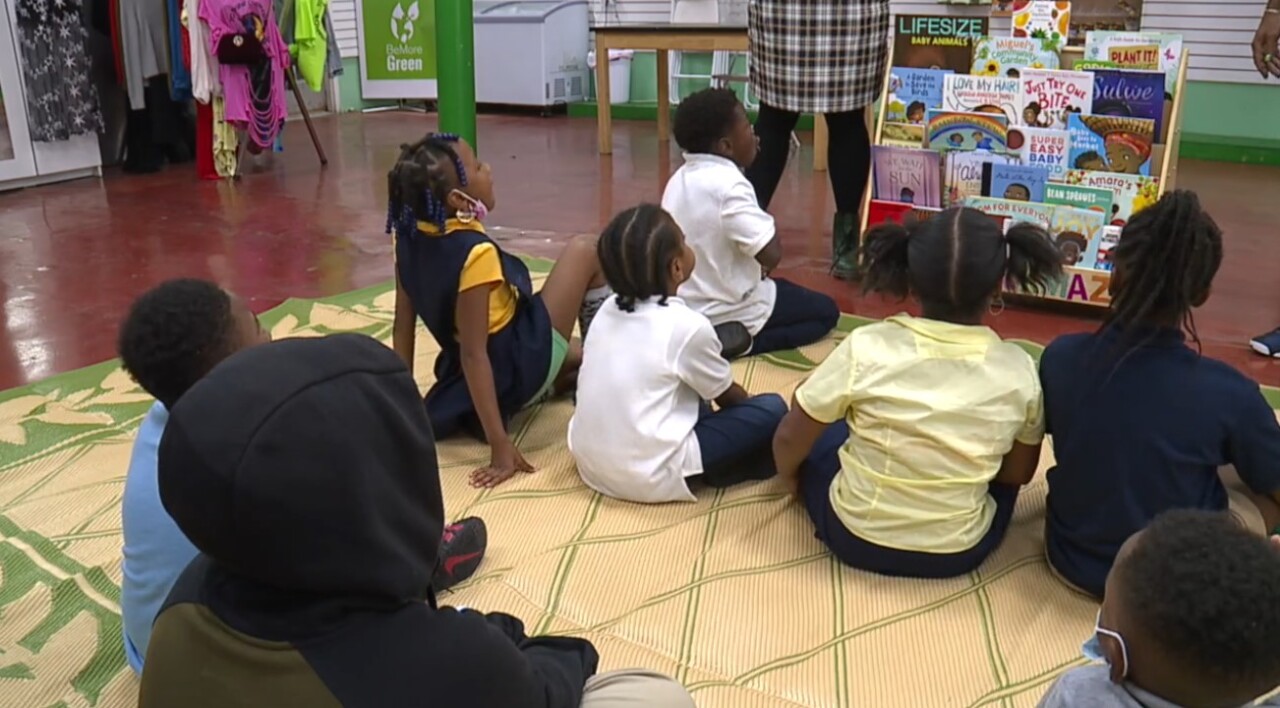Araba Maze is on a mission.
Last November, we told you when she won a United Way Changemaker grant to install free book vending machines across the City.
While she's working to make that a reality, she's not waiting to get books into kids hands.
On Monday afternoon, she installed a free bookshelf at Be More Green.

Maze is trying to fight book deserts, places where it's harder to access books, which can hurt kids' literacy and impact their socio-economic status throughout life.
"We're trying to interrupt that, by giving books at a young age, where the people already are," says Maze.
The organization Unite for Literacy shows this map of book deserts in Baltimore, shading red were there's a smaller percentage of households likely to have 100 books per household:
Unite for Literacy CEO Mike McGuffee told us they use NAEP data, which collects reading level data and surveys from across the US at different grade levels, including information on the number of books in a student's home to create the map.
The reason Unite for Literacy focuses on the 100 books per household threshold, is based on studies and research. McGuffee highlighted one study in particular that was published in 2010.
The research study looked at graduation rates across 27 countries over 20 years.
"[Researchers] found that books in the home was actually a really good predictor of potential graduation rates, and if you came from a bookless home, the probability of graduating 9th grade was 30%," he said. But the more books a student had, "the graph almost went straight up and then curved, and it curved right at 100 [books]."
This is a screenshot of that graph in the research article.

In her viral TikTok in November, Araba described how she'd become a librarian to help give more kids access to books, but realized she still wasn't reaching many kids.
We also took a look at the data available from Baltimore City to get another perspective of book access in Baltimore.
In the map below, we have four layers of data.
The bottom layer includes 2018 per capita income, which is blended with the map and sorted by census tract. The other three layers you can turn on and off. These include a layer that shows the walking score for each community statistical area, the number of library cards per 1,000 residents in each community statistical area and the yellow squares are each of the library branches for the Enoch Pratt Free Library.
Maze hopes that these free bookshelves, and eventually, the free book vending machines, will help kids start building up their own home libraries and encourage them to read more.
In November she told us that even if you live near a library, you can still lack access to books.
So she's hoping to install vending machines where people are already at, to help kids and families build their own home libraries.

In doing so, she's creating what McGuffee refers to as 'book gardens.'
"She's doing the work," he said, after hearing about Maze's projects.
"It's a caring adult, sharing books with kids, that makes the difference to all of this," added McGuffee.
Caring adults, like Maze, engaging with kids and their parents to create an excitement around reading at home.


